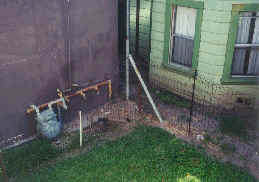
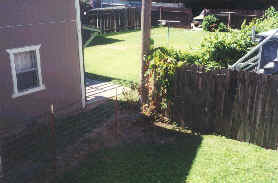
RANDY L. PHELPS
During the Summer of 2000 through the Spring of 2001, the small back yard was transformed into a garden patio. The backyard is small, measuring only 40 feet wide, by 15 feet deep. Upon moving in, the backyard was a simple plot of grass, with wire fencing along two sides, and a decaying dog-eared fence on another, as shown below. Given the proximity of the bakery and the housing units in the urban core of Sacramento, the yard was not an inviting place.
Here is what the yard looked like in the Summer of 2000, prior to construction: 

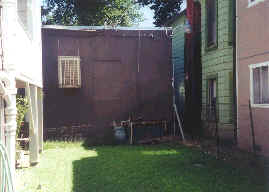
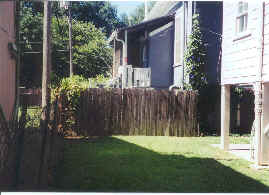
Backyard: NE Corner from groundlevel Backyard: SE Corner from groundlevel The transformation of the backyard began in the summer of 2000, with the construction of a custom designed fence. After a sequoia redwood stain was applied to redwood purchased from the Home Depot, the dog-eared portions of the fence boards were cut off and inserted into 2x4 boards to form fence panels. The panels were then inserted between posts (shown below), giving an 8 foot tall fence on the bakery side of the yard, and a 6 foot tall fence on the residential sides. The posts were capped for the final touch.
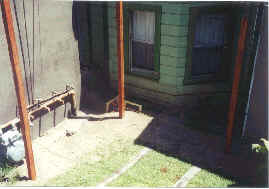
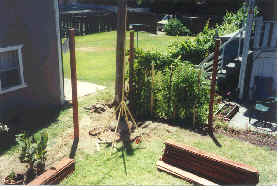
Fence construction: NE Corner from the back porch Fence construction: SE Corner from the back porch
Upon completion of the fence, planting began. The first major elements included a mature Sequoia redwood and a mature cedar tree, both left in their containers. These trees, purchased from a local nursery, were placed within a cement block wall in the southeast corner to block views of the neighboring yard, as seen from the back porch (see photo, below left). In the northeast corner, a planter was created to raise the planting level to avoid underground pipes common throughout the city. Within this planter, three Italian cypress trees were planted, to block a security light for the bakery next door. A small potted citrus grove was placed in a semicircular region in the northwest portion of the yard. Among the trees are a dwarf Dancy tangerine, an Owari Satsuma mandarin, a tangelo and a Calamandarin. A potted avacado tree, a dwarf orange tree and a potted Lisbon lemon tree round out the collection in this portion of the yard.
To provide fall colors, which is especially meaningful as I am from the Great Lakes region (Ohio), where maple trees provide for a fantastic display of fall color, Japanese maple trees in containers, and two birch trees in the ground, were planted in the southeast/east portion of the yard. The birch trees and one Japanese maple provide vivid yellow leaves in the fall (see photo, below right), while two smaller Japanese maples turn a deep red. A final Japanese maple turns a striking orange, contributing to a fall scene that while small in scale, rivals any seen in rural environments. With the collection of trees in the southeast corner of the yard, a wooded feel began to develop that not only provides for a an escape from the urban environment, but also an escape from the intense summer sun found in the central valley of California.
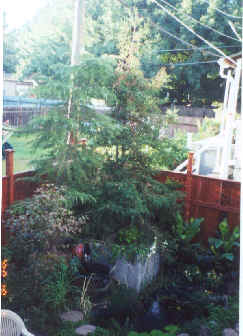
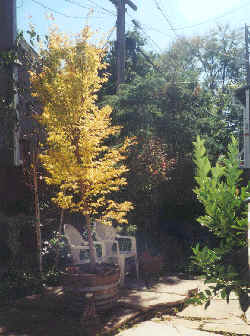
Redwood, cedar and a Japanese maple Autumn foliage and citrus (lemon) coexist
A 160 gallon prefabricated pond was added in the southeast corner of the yard, to further add to the natural, wooded nature of that portion of the yard. At the same time, the grass in the yard was cut out with a rented sod cutter, and 3.5 tons of Arizona sandstone was purchased to form a patio. The sandstone was delivered to the front of the house, and taken by us, slab by slab, to the backyard where it was laid, on a bed of sand, like pieces of a jigsaw puzzle. With the addition of a two-tiered fountain, the major components of the patio garden had been installed by Thanksgiving, 2000 (see photos below).
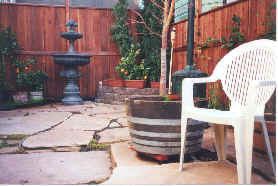
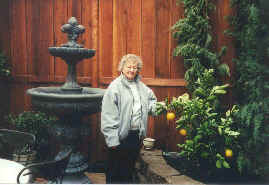
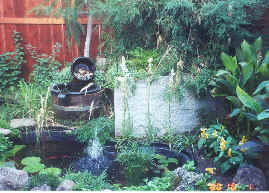
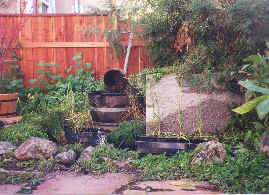
The northern portion of the patio was intentionally made to be reminiscent of Southern California, where I lived prior to moving to Sacramento, in contrast to the southern portion of the patio which is more reminiscent of northern California. Mandevilla vines, along the eastern fence, the potted citrus and a wrought iron dining table provide for much of that feel. In the fall and winter, the assortment of citrus varieties ripen at different times, providing for a source of color during the rainy months found in northern California (see photos below). In the spring, before other plants bloom, citrus blossoms (see photos below) provide a wonderful aroma.
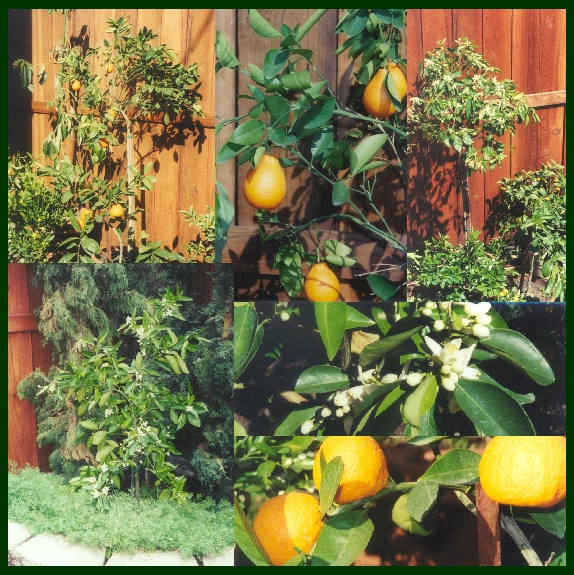
The choice of plantings was, in part, dictated by what was available at the Home Depot and local nurseries at the time of the patio’s construction. Some of the initial plantings, like the citrus, provide for year round enjoyment. Portions of the patio, however, were initially unmodified to allow for additional fine-tuning in the spring, when plant varieties that bloom in the spring/summer became available.
The photos below represent the near-final state of the patio garden, although plantings of Corsican mint between the Arizona sandstone were not complete at the time the photos were taken in May, 2001. Note the grape vines and the Mexican chimnea. Additionally, sculptures both with and without water elements have been added, including "The Frog’s Surprise" fountain, and "Turtle Baby", a small-scale reproduction of a bronze statue at the Cleveland Museum of Art.
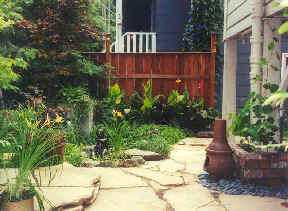
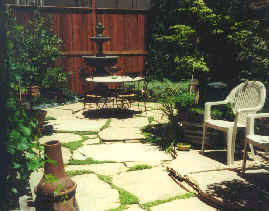
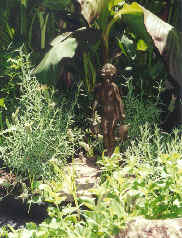
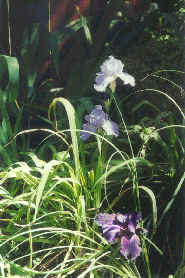
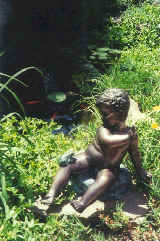
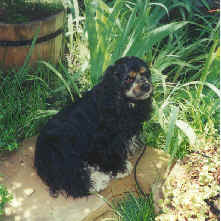
Last Updated 25 July, 2001.